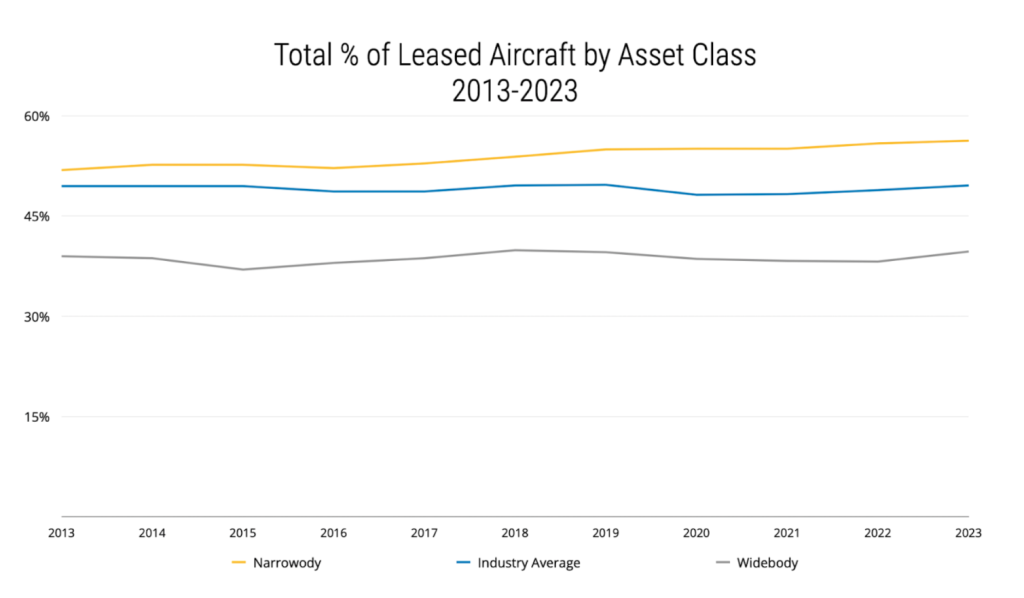When we travel by air, we are used to seeing a variety of airline liveries that aim to showcase the identity of their brands, but did you ever stop to wonder who owns the jet that’s taking you on to your destination? It’s a lesser-known fact that many of the world’s commercial aircraft are not owned by the airlines that operate them – enter aircraft leasing. We asked the experts at IBA Group, a leading aviation intelligence and advisory company and Flightradar24 customer, to help us understand the ins and outs of aircraft operational leasing and give us an overview of what ownership of the global fleet looks like in 2024.
“Aircraft operating leasing became a popular method of aircraft acquisition by airlines in the late 1980’s”, IBA’s President Phil Seymour explains. The demand was spurred by the move from long-term government involvement in air traffic rights between nations to a less regulated system, often referred to as ‘aviation deregulation’. Whilst there were still several agreements in place, the market was much easier to access, especially domestic markets. This led to many airlines operating aircraft under an ‘operating lease’.
What is an operating lease?
An operating lease is an arrangement for rental of the aircraft for a pre-agreed period, rather than a purchase agreement. The aircraft ownership remains with the aircraft leasing company (or ‘lessor’) but the operations, maintenance and insurance are all under the control of the airline.
Why don’t airlines just buy all their aircraft?
Leasing works especially well for airlines that do not have to access huge amounts of capital (or who can’t borrow hundreds of millions of dollars). The airline can simply show a satisfactory business plan and then make regular rent payments for the aircraft. A typical deposit will be the value of around 3-6 months’ worth of payments.
“The major benefit to the airline (as well as the financial outlay) is the flexibility that leasing an aircraft provides over owning it. Leasing also saves the airline the effort of having to sell an aircraft when it wants to perform a future re-fleet.” – Phil Seymour, IBA.
How many commercial aircraft are leased?
Around half of the global passenger fleet is currently leased, although the proportion varies depending on the asset class (widebody, narrowbody, etc). Narrowbodies have proven popular as a leased asset class, with a rising share of aircraft financed by operating lessors according to data from IBA Insight.
A typical lease period will be many years, often from 6-10 years for a new single-aisle narrowbody aircraft and up to 12 years for a new, twin-aisle widebody aircraft.
Who pays to maintain leased aircraft?
Depending upon the lessor’s view of the airline’s financial standing, monthly payments towards future maintenance costs are made as well as the rental payments. These are referred to as “maintenance reserves” and are split into the major high-cost components of engines, airframe heavy checks, landing gears and APU. For an airline with a strong balance sheet and robust financial history, the payment of maintenance usage may be deferred to the end of the lease.
Did you know that half of the world’s commercial aircraft were leased? Let us know in the comments?
Cover photo: Aaron_GCRR, JetPhotos.
The post What is aircraft leasing? appeared first on Flightradar24 Blog.
